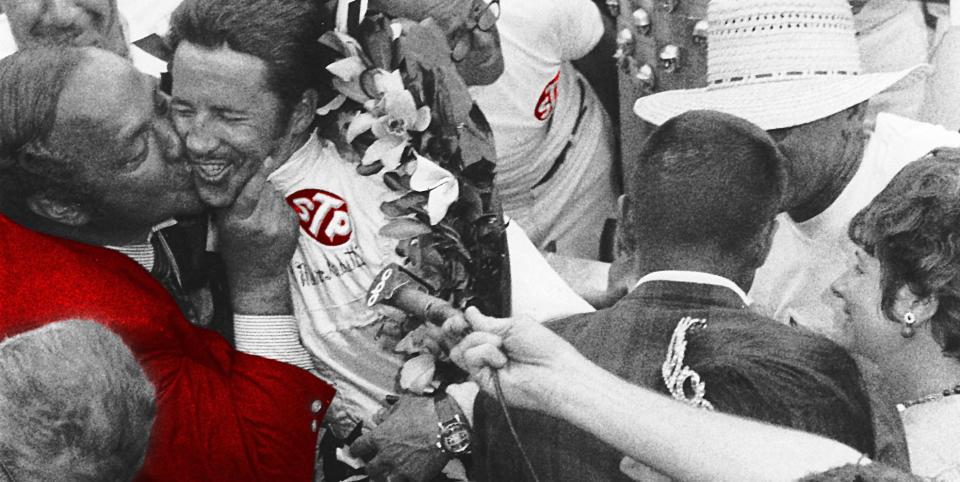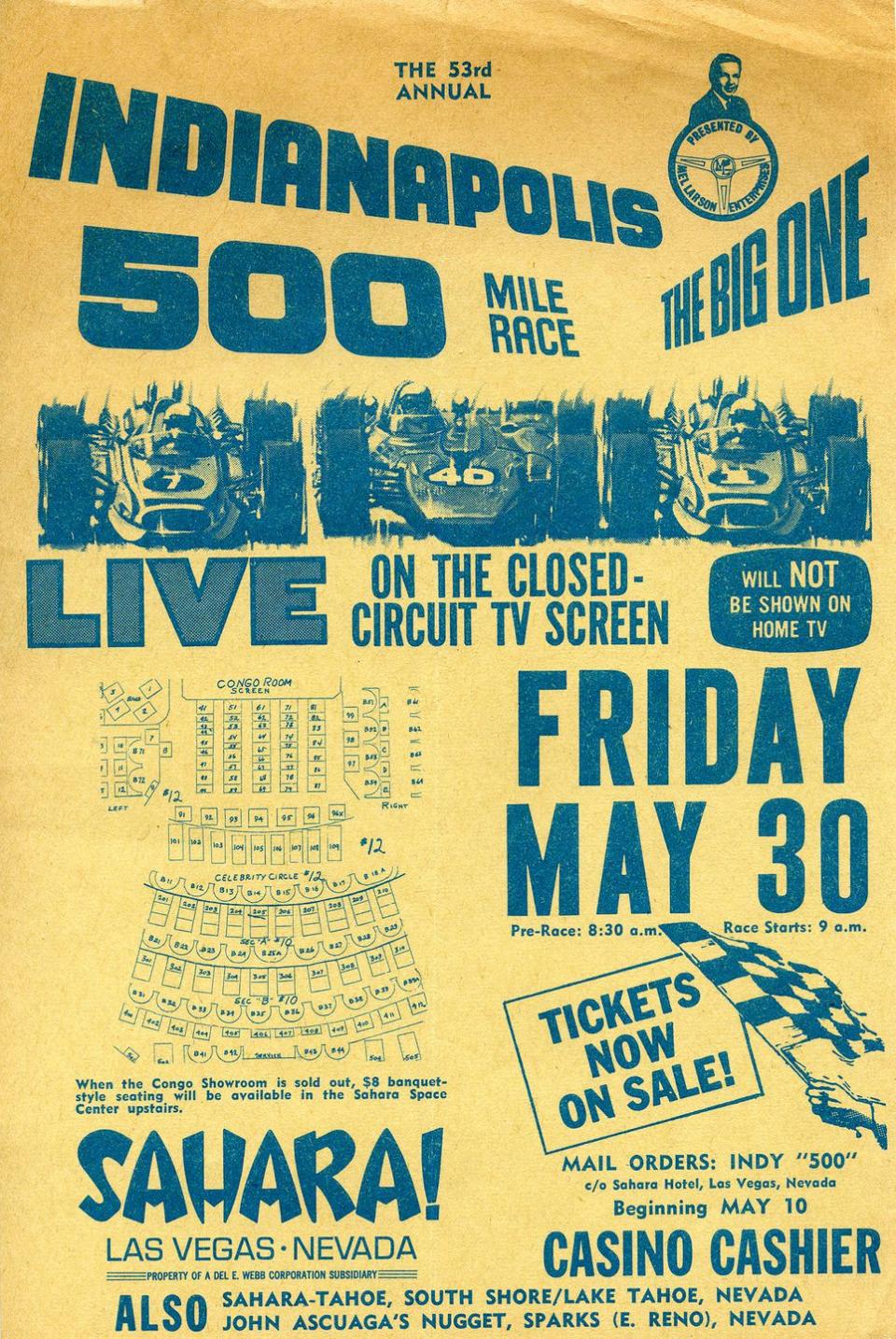Why Mario Andretti's Indy 500 Victory 50 Years Ago Changed Racing

A half-century later, it's among the most indelible images in American sports. Mario Andretti, a 29-year-old two-time USAC national champion, had just won the 1969 Indianapolis 500 and pulled his turbocharged Ford-V-8-powered Hawk III onto Victory Lane. There, Andy Granatelli, the car's owner and CEO of STP, looking like a ripe tomato in his STP blazer, planted a sloppy kiss on Andretti's cheek. That kiss changed American racing.
"He was so dynamic and visible in every way," Andretti recalls about the Dallas-born Granatelli. "And he certainly paved the way for other brands to follow suit, who saw what he did with a product that's, you know, not 100 percent necessary. He created a euphoria about STP so that you could not do without it." And he'd done it by using racing to raise the visibility of his product.

Racing in the '60s was about manufacturers. Ford spent millions to win at Le Mans and developed engines and/or models of its production cars for open-wheel, stock-car, and drag racing. Chrysler's specialized 426 Hemi engine was an instant legend. And GM built the Camaro Z/28 to win the SCCA's Trans-Am series. What little consumer-product advertising existed was muted and often temporary.
Granatelli and his brothers, Joe and Vince, were racing entrepreneurs. And they had been running cars at Indianapolis as far back as 1946, earning reputations as brilliant, intuitive mechanics but finding no success at the Indianapolis 500.
In the early '60s, Studebaker acquired Granatelli's company, Paxton, and he came along with it. The company put him in charge of a small division called Chemical Compounds that had one product-Scientifically Treated Petroleum, which Granatelli renamed "STP."
He relentlessly promoted the brand. He appeared in the ads, gave away countless STP stickers, and turned an obscure oil treatment into a cultural icon and a wildly successful product. And at the core of all that promotion was racing. STP, after all, was "the Racer's Edge."
Part of the genius was campaigning cars that drew attention even when they weren't winning. STP logos appeared on the wildly popular Novi Indy cars in the early 1960s, for instance. Granatelli's brilliant turbine-powered entries suffered frustrating failures in the 1967 and 1968 Indy 500s, unless you were measuring free media exposure, in which case they were clear winners for STP.
The 1969 campaign seemed doomed as well when Andretti crashed the team's all-wheel-drive Lotus in practice after the right-rear hub failed. The wreck left him with minor flash burns on his lip. But then Andretti qualified second in a backup Hawk and, after battling A.J. Foyt for the lead in the first half, took control of the race when Foyt was held up in the pits with turbocharger trouble. Andretti dominated the final 95 laps. To this day, it's the only Indy 500 win that any member of the Andretti family has earned as a driver.
By the time he kissed Andretti in Victory Lane, Granatelli had built STP's market share from 7 percent to more than 85 percent. It was proof that racing sponsorships could move merchandise. And it formed a link, inadvertently, between traditional sponsors selling auto-related products-such as gasoline, tires, and spark plugs-and more ordinary consumer products. Most STP customers were buying and using the additive themselves, after all, because as Andretti noted, it was not strictly necessary.
After that, sponsorships in motorsports blew up, especially for consumer products that were even less directly related to street cars and their maintenance than was STP. In 1970, Al Unser won the Indy 500 driving a P.J. Colt sponsored by Johnny Lightning toy cars. In NHRA racing that year, longtime rivals Don Prudhomme and Tom McEwen inked their deal to promote Mattel Hot Wheels with their Funny Cars. In 1971, R.J. Reynolds Tobacco threw money at NASCAR to brand the Winston Cup Series. And in 1972, Granatelli signed a landmark deal with Richard Petty that brought a national-product sponsorship to a NASCAR team.
Photos of the Andretti-Granatelli smooch were everywhere at the peak of motorsports' cultural resonance in America. The new era of consumer-centered sponsorship was here. An era that, on that May day in 1969, was sealed with a kiss.
From the May 2019 issue
('You Might Also Like',)

 Yahoo Autos
Yahoo Autos 